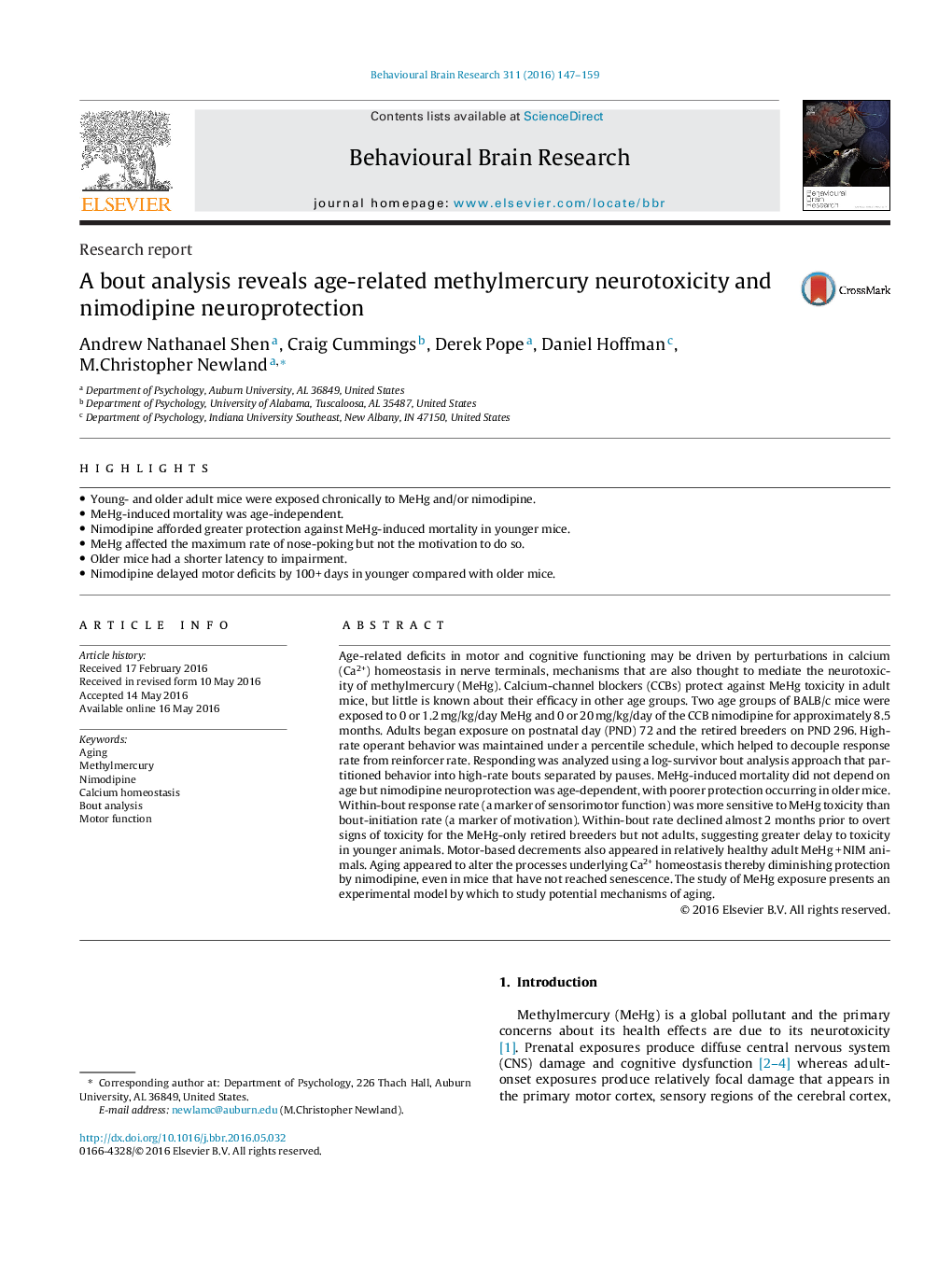| Article ID | Journal | Published Year | Pages | File Type |
|---|---|---|---|---|
| 6255915 | Behavioural Brain Research | 2016 | 13 Pages |
â¢Young- and older adult mice were exposed chronically to MeHg and/or nimodipine.â¢MeHg-induced mortality was age-independent.â¢Nimodipine afforded greater protection against MeHg-induced mortality in younger mice.â¢MeHg affected the maximum rate of nose-poking but not the motivation to do so.â¢Older mice had a shorter latency to impairment.â¢Nimodipine delayed motor deficits by 100+ days in younger compared with older mice.
Age-related deficits in motor and cognitive functioning may be driven by perturbations in calcium (Ca2+) homeostasis in nerve terminals, mechanisms that are also thought to mediate the neurotoxicity of methylmercury (MeHg). Calcium-channel blockers (CCBs) protect against MeHg toxicity in adult mice, but little is known about their efficacy in other age groups. Two age groups of BALB/c mice were exposed to 0 or 1.2 mg/kg/day MeHg and 0 or 20 mg/kg/day of the CCB nimodipine for approximately 8.5 months. Adults began exposure on postnatal day (PND) 72 and the retired breeders on PND 296. High-rate operant behavior was maintained under a percentile schedule, which helped to decouple response rate from reinforcer rate. Responding was analyzed using a log-survivor bout analysis approach that partitioned behavior into high-rate bouts separated by pauses. MeHg-induced mortality did not depend on age but nimodipine neuroprotection was age-dependent, with poorer protection occurring in older mice. Within-bout response rate (a marker of sensorimotor function) was more sensitive to MeHg toxicity than bout-initiation rate (a marker of motivation). Within-bout rate declined almost 2 months prior to overt signs of toxicity for the MeHg-only retired breeders but not adults, suggesting greater delay to toxicity in younger animals. Motor-based decrements also appeared in relatively healthy adult MeHg + NIM animals. Aging appeared to alter the processes underlying Ca2+ homeostasis thereby diminishing protection by nimodipine, even in mice that have not reached senescence. The study of MeHg exposure presents an experimental model by which to study potential mechanisms of aging.
